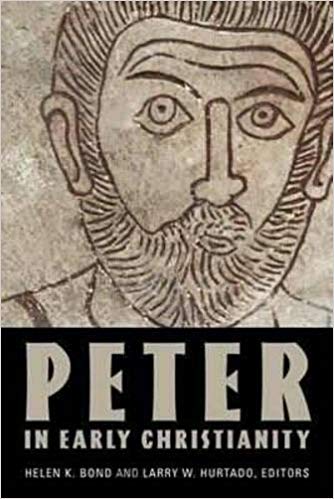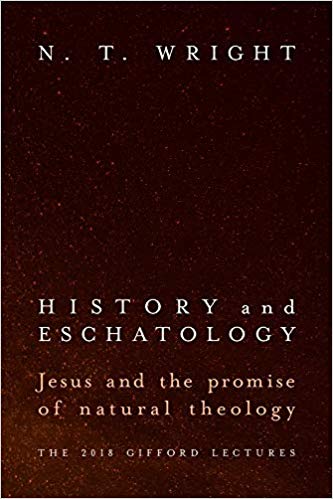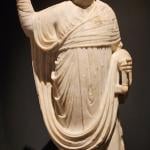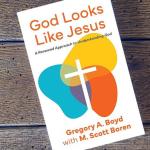The essay by Helen Bond comes to grips with the issue of whether or not Papias’ testimony about Peter being behind Mark’s Gospel, or more accurately whether it is his testimony translated by Mark from original Aramaic to Greek is historically probable. Bond focuses on Joel Marcus’ much commended commentary on Mark to discuss reasons why Papias should perhaps not be assumed to be giving accurate information in this case, perhaps in order to rescue Mark’s Gospel from it’s not apostolic origins, and from the Gnostics in the second century? Before we go down that rabbit trail, it needs to be said that there is a very detailed study my Maurice Casey entitled The Aramaic Sources of Mark’s Gospel, in which he demonstrates at some length, by retrojecting significant portions of Mark’s Gospel back into Aramaic and showing how this helps explain the rather Semitized Greek of that Gospel. Bond does not really deal with this evidence, which, I have found rather convincing. It does not prove that Papias’s testimony is completely accurate, but it supports the possibility.
Some of the criticisms of Marcus of the possible link between our earliest Gospels and Peter simply do not hold up: 1) the fact that the portrait of Peter in the Gospel is rather negative, may be attributed to the fact that Peter was being painfully honest about his lack of understanding and even denials at a crucial juncture. Mark is not trying to do hagiography in regard to Peter, and presumably if Peter learned anything about humility from Jesus, he would not be polishing his halo in his reminiscences about Jesus either; 2) the fact that Mark’s knowledge of Galilean geography seems sketchy at best, and the fact that many of the stories lack the sort of details one would associate with an eyewitness. There are two problems with this whole line of approach. Firstly, the evidence we have suggests Mark was from Judaea and more specifically his mother’s house was in Jerusalem. There was no reason for Judaeans to make religious pilgrimages to Galilee, unlike the reverse case. No one is claiming Mark was a Galilean, nor that he was a disciple of Jesus in Galilee. As for the fact that at least some of the stories seem to lack particulars that might tip off an eyewitness report, on the one hand there are some such particulars not found in other Gospels (e.g. the anointing of Jesus took place in the house of Simon the leper) and on the other hand, as Papias says Mark was forming Peter’s testimony into chreia, which rhetorical process involved streamlining source material so that it focuses on a particular famous saying or deed of a historical figure. Mark’s rhetorical editing does not count against his having used eyewitness source material. 3) that there are two feeding miracle stories suggest Mark is not that close to an eyewitness report, but rather reflects a longer history of oral retellings, in which two different versions of one actual set of events emerged. While this point has some substance to it, one has to remember that Mark is not an eyewitness. But if he is repeating a testimony from Peter, then Peter’s memory would be that like with exorcisms, other healings, there was more than one occasion when Jesus fed a multitude. There are differences in the two feeding stories, enough to suggest more than one event. The fact that there are various exorcism stories doesn’t seem to lead to the conclusion that these must all be variants on one story, so I see no need for such skepticism about two feeding miracles.
Bond, I think rightly assumes Mark is writing from Rome to a Roman audience who had at some point benefited from an association with Peter (p. 49), She also rightly points out that more recent literary studies of Mark have suggested that actually Mark’s account is not nearly so negative towards Peter as has sometimes been suggested. After all, he is the first one to properly confess Jesus is the Messiah. Bond broaches the subject of whether Mark wrote during or after the lifetime of Peter, favoring the latter (pp. 52-53) as was later assumed by Irenaeus. While I agree I think he wrote after Peter’s death, and so sometime in the late 60s, perhaps near the conclusion of the Jewish War, this does not lead to the conclusion that he wasn’t relying on the testimony of Peter in his composition. Indeed, the account of Papias suggests a process of writing down the testimony, and then rendering it into Greek, which could have happened after Peter’s likely martyrdom. Peter may have approved of Mark’s Aramaic note taking, not the later rendering it into Greek. Bond thinks Mark is relying not so much on Peter, as on the social memory of Peter in the Roman church. This may be partly true, but I see no reason why that obviates the idea he was primarily relying on Peter’s own testimony. Mark may have consulted others who heard Peter in Rome about the testimony.
Bond rightly spends time on the genre of Mark, which she rightly identifies as an ancient bios, or biography and as she notes this in itself explains some of the streamlining and omitting of details in the narratives. Mark is following the usual editing processes of a work in that genre. As she also notes, Mark’s Gospel, like Tacitus’ Agricola ignores the private life of the subject, and focuses on his public life, as does Mark on Jesus. She rightly stresses Mark’s Gospel is not a biography of Peter, but of Jesus, with Peter as important only in so far as he is involved with Jesus. And this raises an important issue to be addressed later in these posts, when discussing Gene Green’s helpful work on Peter— namely that the attempt to derive Peter’s theology from Mark’s Gospel has a methodological problem— Mark is not trying to present Peter’s theology, but rather Jesus’, which presumably Peter would agree with. And on the surface level, scholar’s quite rightly say that we can learn something about Mark’s theologizing of Jesus from his Gospel. To draw conclusions about Peter’s thought, is a further step removed from both the surface of the text, and the focal subject matter of the text which is Jesus, not Peter.
Bond is also right (pp. 57ff.) that Mark’s portrayal of Peter is both positive and negative, and this actually makes him a sympathetic figure for his audience. She concludes helpfully: “Just as Paul’s persecuting activity acquired a different tone by what his congregations knew of his subsequent Christian activity, so Peter’s denial and failings must be seen against his later devotion– quite possibly too, the knowledge that, in the end, he did follow his master, even to death. Writing at a time of persecution and difficulty, Mark’s Peter reassures Christians that following Jesus is hard, that even the greatest of disciples had his moment of failure, but that, like him, even those who fail can still hope for restoration (Mk. 14.28;16.7).” (p. 59). Exactly!!
In the end Bond is content to conclude that a link between Mark and Peter is certainly not impossible, and it is not fruitless to speculate as to whether some of Mark’s theology may go back to Peter. She says ‘quite possibly it does” (p. 61). But as she cautions demonstrating a link between Mark and Peter does not necessarily lead to the conclusion of extensive historical accuracy in Mark. That requires other considerations to be taken into account (e.g. was Peter’s memory faulty). This is one of the most helpful essays in this volume.






















